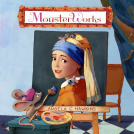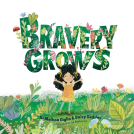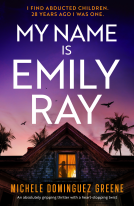
Adventures in Architecture for Kids
30 Design Projects for STEAM Discovery and Learning
by Vicky Chan
This title was previously available on NetGalley and is now archived.
Send NetGalley books directly to your Kindle or Kindle app
1
To read on a Kindle or Kindle app, please add kindle@netgalley.com as an approved email address to receive files in your Amazon account. Click here for step-by-step instructions.
2
Also find your Kindle email address within your Amazon account, and enter it here.
Pub Date 21 Dec 2021 | Archive Date 29 Dec 2021
Quarto Publishing Group – Rockport Publishing | Rockport Publishers
Talking about this book? Use #AdventuresinArchitectureforKids #NetGalley. More hashtag tips!
Description
Offering a world of possibilities for learning math, engineering, history, social studies, planning, geography, art, and design, this rich educational resource includes hands-on projects that allow kids to experiment, design, build, succeed, fail, and try again.
Children will draw upon many fields of knowledge and sharpen a variety of skills, including observation and communication, as they:
- Complete building challenges with corrugated cardboard and geodesic forms.
- Look at how designers have solved impossible problems of gravity and space with creations such as suspension bridges, the Loretto helix staircase, and Brunelleschi’s dome.
- Explore how materials can be used in interesting ways—how paper can go from flimsy to structural, for instance.
- Participate in family game playing: client and design team—finding creative ways to meet a client’s wish list. Use games to test strength, balance, and structure.
- Engage in pure imaginative archi-doodling.
- Explain the why. Why did styles evolve as they did? What technology was available when?
Design thinking—creative problem solving—will be crucial to resolving the global challenges in business, politics, and the environment facing the next generation. Each book in the Design Genius Jr. series teaches kids this important skill through fun, hands-on projects in a single area of design that challenge them to identify problems, explore possibilities, test ideas, and then come up with original solutions.
Available Editions
| EDITION | Other Format |
| ISBN | 9781631599729 |
| PRICE | US$24.99 (USD) |
| PAGES | 144 |
Featured Reviews
 John L, Reviewer
John L, Reviewer
Dare I say this book builds from the ground up? Well, that's its firm intention, anyway – getting us all thinking in very STEM-subject ways about our lived environment. First off (beyond an introduction so woke it felt like the press release sent to teachers on behalf of this volume, and not for the target audience at all), we're making plans of our rooms at home, and then constructing our first model, based on those plans. Then it's 'what can we make with spaghetti struts and lasagne sheets?', 'what can we make out of triangular forms?' and we're away, letting our imagination run riot (which as we had no line about knife safety before this is hopefully the only running involved).
Transport hubs, zoos, habitats ready for Tatooine – they're all here, and all on well-done four-page exercises. The photos of the key steps may be small but are fine and clear, as is the description of the project's process and intent, but here, once more, this is a book that is speaking to the tutor or adult involved. Every idea has at least one box-out addressing the adult in the room, suggesting things to discuss once the making's made, drumming in the need for ecological considerations, even at this small scale, and implying what STEM subjects are at hand every time.
But I expected something a bit freer. It's only the last couple of mapping-a-city exercises where we're not restricted to what the project looks like. I know a lot of them are discussing concepts – airflow, water retention, daylight, etc – but I felt there should have been a way for a bright child to run off with those ideas and make their own constructs, which of course they can do, only not for the fulfilment of anything here. What's left then is just the building blocks – which are fine and necessary, but they're gasping to be put to use. Still, there is depth here, and the time all the projects will take would fill many a rainy afternoon, and with something much more educational than the standard crafting session. So perhaps four stars are justified.
 Educator 901032
Educator 901032
This book organizes a plethora of great activities by basic concept with short explanation on architectural theory and easy to follow steps. Activities may require adult supervision and/or assistance. Concepts covered include construction, architecture throughout history, landscaping, sustainability, and city planning. Illustrations and photographs are numerous and provide helpful examples for kids to start with and develop on. This resource is a great starting point for designing STEAM activities with kids with notes on topics to tie into discussion or further reading.
I have a ten year old who has just decided he would like to become an architect when he grows up, so I couldn’t resist requesting “Adventures in Architecture” for us to read together.
I am so glad I did! There are a ton of activities to introduce you to the field and the materials will easily be found around the house- like paper, pasta or even ice. The steps for each project are concise, clear and easy to follow.. Subjects covered are general construction, architecture and history, landscape architecture, sustainable architecture and city planning. It really whet my child’s appetite and as soon as they finished an activity, they were keen to get started on the next project.
It’s the perfect book for a science lesson in school or a rainy day at home.
Thank you to the author, publisher and Netgalley for the opportunity to review an advanced copy of the book in exchange for an honest review.
Readers who liked this book also liked:
Bonnie Kelso (co-author and illustrator), Kentee Pasek (co-author)
Children's Nonfiction, Entertainment & Pop Culture
Dr Melissa Giglio; Daisy Geddes
Children's Fiction, Children's Nonfiction, Parenting & Families
Michelle Dominguez Greene
General Fiction (Adult), Mystery & Thrillers, True Crime


















